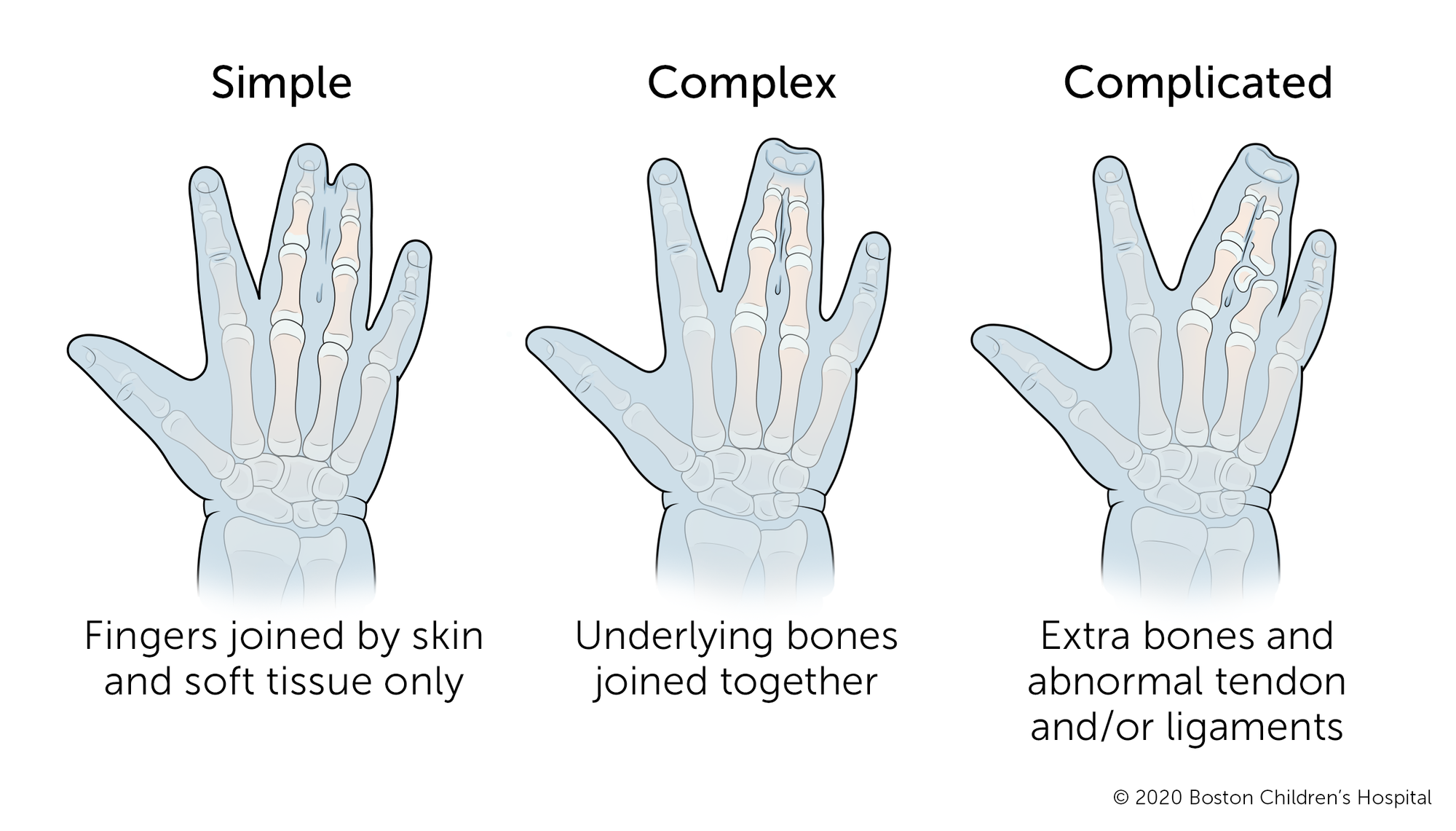– Syndactyly is often diagnosed at birth and sometimes detected earlier on a prenatal ultrasound.
– X-rays may be used to assess the structure of the fingers and determine treatment.
– Surgery is the most common treatment for syndactyly, usually performed between 1 and 2 years old.
– The skin is split evenly between the fingers during surgery, and skin grafts may be used to cover the separated fingers.
– Only one side of a web space is separated at a time to avoid complications.
– Children with Apert syndrome often experience syndactyly, with three main types: Type I (spade hand), Type II (mitten hand), and Type III (rosebud hand).
– After surgery, a cast or bandage will be worn for two to three weeks, followed by a splint for six weeks.
– Occupational therapy may be recommended to reduce scarring, manage stiffness and swelling, and improve function.
– “Web creep” may occur as scar tissue grows between the fingers, potentially requiring a second surgery.
– Regular follow-up visits are needed to monitor healing and movement.
– Some children may need additional surgeries for improved function and appearance of the hand.
– Boston Children’s Hospital has specialized programs for the treatment of syndactyly and other hand problems, with experienced diagnosis, treatment, and care options.
– The text does not provide any facts, stats, or figures about syndactyly.
Continue Reading

